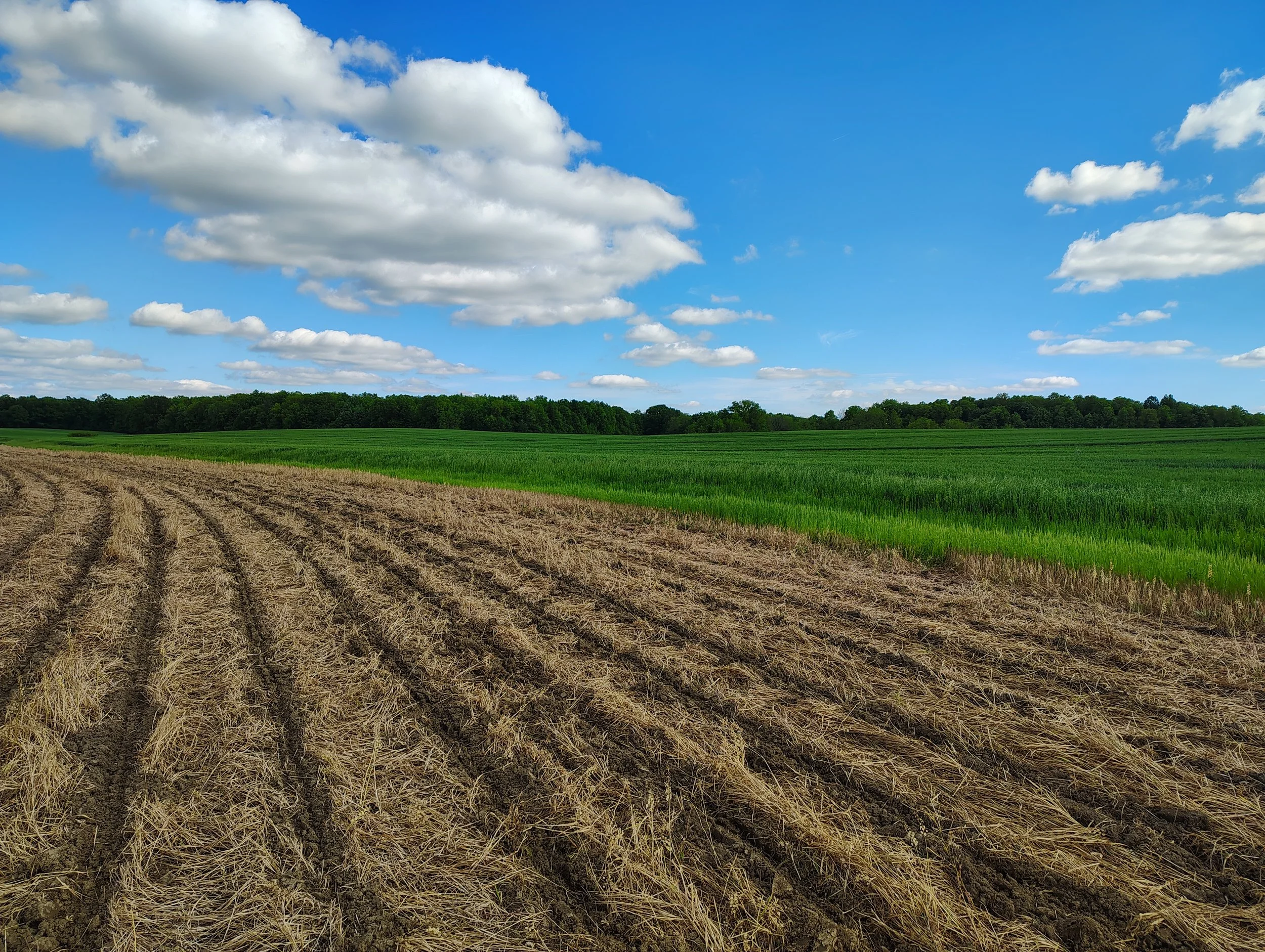Going Under Cover
As agriculture continues to evolve and new ways of farming are being developed, cover crops have become more and more popular among farmers in Ohio. Studies are showing that a little over 80%of no-till farmers In Ohio apply cover crops to their fields. When it comes to cover crops, there is a lot of unknowns on how to handle them. Timing is everything. From the moment the seed is planted to the time the plant is terminated it is crucial to have a plan in place to properly manage them. With cover crops becoming more an more common, many questions arise. What should be planted? How should they be terminated? Or will they compete with our cash crops?
Many types of cover crops can be used and it is important to plant them according to your needs. Legumes such as clover, alfalfa, and winter pea are planted to provide nitrogen to the soil through nitrogen fixation. Other cover crops such as rye, wheat, and oats can provide nitrogen as well as potassium and phosphorus to the soil. The thing to remember is that cover crops are an investment in the health of the soil. No investment brings instant results or gratification; however with some time and effort they can bring tremendous results. A healthy cover crop not only provides nutrients to the soil but also maintains soil structure.
Additionally we can add that a full cover crop stand can greatly aid in preventing soil erosion. In the same way that native grasses hold together a waterway or a tree root system holds together a river bank, cover crop root systems holds the soil together in a field during heavy winds or rain. The root systems greatly improves soil structure and the soils ability to wick away water during a wet season. It is critical to note that the cover crops ability to wick away water can also be a disadvantage when experiencing a dry season. We want to make sure that there is enough moisture left in the ground to be able to give our cash crops a start. Having a plan in place to effectively terminate the cover crops is necessary to help prevent this situation.’
After the cover crops come up in the spring and it is time to plant the cash crops, it is important to establish a good method of terminating the cover crop. One method is to roller crimp it. By crimping the cover crop once the head fills out, it causes it to die because the the stems become crimped and the vascular system is damaged, causing the flow of water up the stem to be disrupted. Roller crimper termination is most effective with cover crops that have straw like stems that hollow out when the head goes to seed. Wheat, barley, and rye respond well to a roller crimper whereas clovers do not.
Another way to terminate cover crops is to work them in with light tillage such as a discing, shallow plowing, chisel plowing or some form of vertical till. This provides excellent green manure for the soil. Termination by animal grazing is also a great method to take of cover crops.
The final termination method involves a chemical burn down on the field to kill the cover crop. Some cover crops such as cereal rye and vetch may benefit from being burned down because of their invasive nature when not completely terminated at the proper time. In the end it isGoing Under Cover important to take the time to figure out what method of cover crop termination is going to be best for your fields.
Our team at the Ashland Soil and Water Conservation is dedicated to helping local farmers thrive on their land. Cover crops are an expense that can be difficult to handle especially with the rising seed costs and planting costs. This year the Muskingum Watershed Conservancy is offering a cover crop cost share program to help farmers in the watershed manage that cost.
The program offers a $12/acre cost share payment and an additional $10/acre cost share available for cover crop acres terminated by animal grazing. There is a 175 acre limit for acres that can be approved for the cost share. Farms within the Charles Mill and Pleasant Hill Lake watersheds are automatically approved for cover crop cost share in order to prevent soil erosion into the lakes.
In order to apply, all fields must have soil tests taken no earlier than fall of 2021. Producers must provide invoices of the seed purchased, and seed tags must be provided to ensure good germination and low weed seed content. If seed tags are not available, the seed will need to be tested by the Ohio Department of Agriculture for weed seed content. Additionally, cover crop plantings are required to follow NRCS standards in order to apply for the cost share.
For more information on cover crops, or if you are interested in applying for cover crop cost share call Brennen Hart at Ashland Soil and Water Conservation at 419-289-4828 or come visit our office at 110 Cottage Street Ashland, Ohio 44805. If you are interested in other conservation practices visit our website at www.ashlandswcd.com



